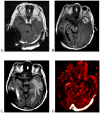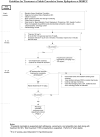Neurologic Emergencies in the Patients With Cancer
- PMID: 26704760
- PMCID: PMC5473518
- DOI: 10.1177/0885066615619582
Neurologic Emergencies in the Patients With Cancer
Abstract
Neurologic complications of cancer are common and are frequently life-threatening events. Certain neurologic emergencies occur more frequently in the cancer population, specifically elevated intracranial pressure, epidural cord compression, status epilepticus, ischemic and hemorrhagic stroke, central nervous system infection, and treatment-associated neurologic dysfunction. These emergencies require early diagnosis and prompt treatment to ensure the best possible outcome and are best managed in the intensive care unit. This article reviews the presentation, pathophysiology, and management of the most common causes of acute neurologic decompensation in the patient with cancer.
Keywords: cord compression; elevated intracranial pressure; neuro-oncology; status epilepticus; stroke.
Figures







References
-
- DeAngelis LM, Posner JB, Posner JB. Neurologic complications of cancer. 2nd. Oxford; New York: Oxford University Press; 2009.
-
- Gilbert MR, Grossman SA. Incidence and nature of neurologic problems in patients with solid tumors. Am J Med. 1986;81:951–954. - PubMed
-
- Smith ER, Madsen JR. Cerebral pathophysiology and critical care neurology: basic hemodynamic principles, cerebral perfusion, and intracranial pressure. Semin Pediatr Neurol. 2004;11:89–104. - PubMed
-
- Mokri B. The Monro-Kellie hypothesis: applications in CSF volume depletion. Neurology. 2001;56:1746–1748. - PubMed
-
- Stocchetti N, Maas AI, Chieregato A, van der Plas AA. Hyperventilation in head injury: a review. Chest. 2005;127:1812–1827. - PubMed
Publication types
MeSH terms
Substances
Grants and funding
LinkOut - more resources
Full Text Sources
Other Literature Sources
Medical

